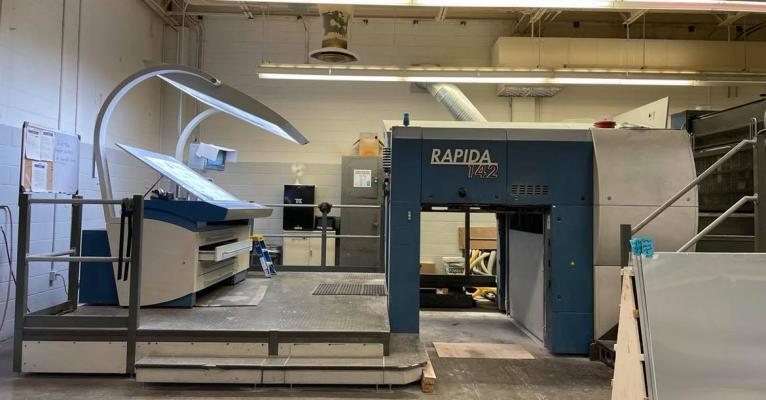
Lithography: The Mother of Offset Printing
Alois Senefelder was tired of writing each copy of his plays by hand.
He bemoaned living in 18th century Bavaria, where being a writer meant aching fingers and long candlelit nights just to provide actors and theaters copies of his scripts. Alois dreamed of using a letterpress where raised metal letters could be arranged and act as a stamp to mass-produce works like newspapers and books. Without extensive funds or connections to access the wonderful machine, a grumpy Alois continued to handwrite his scripts.
On an ordinary day, Mrs. Senefelder instructed her weary son to go to the store and bring back the goods she needed to make dinner that night. Alois scribbled a list on limestone with a grease pencil and then the idea struck him. What if he etched into the stone with the grease pencil and then added the colors? He rolled ink over the stone and laid a paper down on its surface. Like oil and water, the grease and ink did not mix and the ink was transferred onto the page. Just like that, a new style of printing was born.
Until the grocery list breakthrough there were only two types of printing: intaglio and relief. Relief means an image comes forward from a plate, like the letterpress. Intaglio is where an image is cut into a plate, ink is rolled over it, the surface is cleared, and the ink from the grooves transfers onto the paper. The French named the process using two Greek words. Stone, “lithos,”and “graphein,” to write, merged together. Thus, lithography was born.
Alois’ new discovery allowed for widespread individual printing. People did not have to save up and buy copper plates or steel letters. The most expensive item needed in this method was a commonplace stone. Artists and entrepreneurs had a way to replicate their work without having to outsource or learn a new craft. They could use materials, like pencils, they were used to working with.
In 1796, Alois talked to the composer Franx Gliebner. The creative pair started a lithographic publishing firm. They experimented with different materials such as using plates instead of stones. Together they perfected a system of chemicals and pressure that allowed for consistent printing using minimal materials.
England officially gave Alois a patent in 1801 for “A new method and process of the various branches of the art of printing on paper, linen, cotton, woolen, and other articles.”
Today lithography is considered an art form. A stone, or other material, is written or drawn on and then inked. Paper is laid upon it and layered with a tympan, a form of packing paper that helps equalize pressure. The stack is rolled through a scraping bar that pushes the ink onto the paper before it is peeled off and only holds the image.
The modern version of lithography is offset printing. Instead of the paper coming into direct contact with the metal plate, the ink is first transferred onto a rubber “blanket.” Since the paper and ink have a multi-step transfer process, it is called “offset.” This has been mechanized and the paper rolls quickly from one blanket to the next. Many large printing presses, like CPC, have offset printers.
Read more about the process of offset printing in our prior post.
For more direct information about the history of lithography, Alois wrote a book entitled The Invention of Lithography which can be purchased online or at several bookstores.
